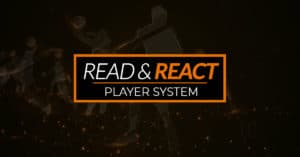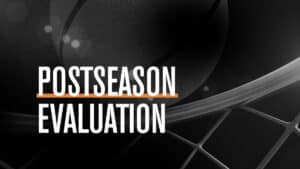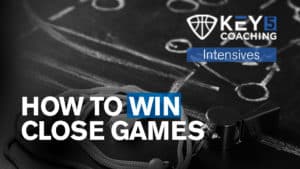Breaking Down Game Film – Turnovers
by Rick Torbett

*Editors note: We HIGHLY recommend our friends at Krossover. They break down your film by possession for you so you can easily filter all of your turnovers and watch them in one ‘highlight’ reel.
Out of the hundreds of things you can chart, I think charting turnovers (on both ends of the floor) gives me the most return on investment. Once I have those turnovers classified properly, I can easily alter my next practice (or my future practices for those in the off season) to fill any gaps that I spot.
I break down offensive turnovers into two large categories (and, you can use a similar methodology for defensive turnovers as well):
1. Turnovers I Can’t Impact
2. Turnovers I Can Impact
I pretty much ignore the turnovers that fall into the first category. On the offensive end, there are a certain amount of turnovers that I am just going to have to live with that were created due to a poor decision, an accidental touch or slip, and a variety of other incidental reasons.
These turnovers are either unrepeatable offenses meaning they probably won’t happen again, they are turnovers that I can’t easily put into an efficient drill to improve upon, or they are just a result of great defense. As we all know, sometimes the defense wins.
But, that leaves the those turnovers that you can directly impact. These turnovers get funneled into two categories: those that came from a failed skill and those that are my fault.
Failed Skill Turnovers
This type of turnover is directly related to the fact that a player has not drilled a skill enough to make him proficient at it. For example, if the low post is open on the baseline side and your player can’t accurately make that pass, that’s a failed skill. And, it can easily be drilled to proficiency. Sure, it may mean that I need to teach it better, or emphasize it more clearly, or adjust my practice to incorporate it, but it is an achievable skill that once achieved will reduce my turnover count. Look for those situations that you can directly impact by making practice modifications.
Wishful Thinking Turnovers
Sometimes as a coach, I want my players to do things that they just aren’t capable of doing that no amount of drilling (at least no amount of drilling that you have time for) will resolve. A 10 year old rec-league team is not going to be able to make an accurate skip pass – they just aren’t strong enough. So, if I continue to ask them to make an accurate skip pass in a game and it results in a turnover, that’s on me.
In these situations, I need to be honest with myself about who my team is and what they are capable of. Then, I need to simplify that action into something achievable given their current skill set, or get rid of it altogether.
What does all this mean?
If I can find Failed Skill Turnovers that can be drilled away and I can adjust my expectations so that Wishful Thinking Turnovers get reduced as well, I can make an impact.
Here’s a quick formula that I like to use that may give you a better feel for the importance of reducing your turnovers. And, yes, these are just estimates:
Find out your average offensive conversion rate (your number of scoring possessions divided by your total number of possessions). If you don’t have access to this, your team shooting percentage can be a rough estimate. For the sake of this exercise, let’s say it’s 40%.
Now, estimate realistically how many turnovers you can get rid of. Perhaps it’s 5 per game – that’s five additional possessions each game.
40% conversion of those 5 additional possessions equals 2 conversions. 2 conversions times 2 points equals 4 additional points each game.
Think about what 4 points would have done to the complexion of your games. Use this same charting methodology to increase the turnovers you cause on defense. Now, you are potentially talking about 8 additional points each game…and, that starts to get significant quickly.
PS: I’ve made a worksheet you can use to chart your offensive turnovers.
You can download it here.
[divider]

How to Win High School Basketball Games
[divider]
Ballhandling with Drew Hanlen

We have teamed up with Drew Hanlen from Pure Sweat Basketball to bring you a series of Player Development videos that will help any player or coach develop.
Ballhandling takes you through 4 categories of drills designed to give you the best handles around.
These skills and drills are used daily by Drew with his NBA Clients and transfer easily to players at any level.Drew is an NBA Strategic Skills Coach & Consultant that has helped over 25 NBA and NBA pre-draft players including David Lee (Warriors) and Bradley Beal (Wizards).






